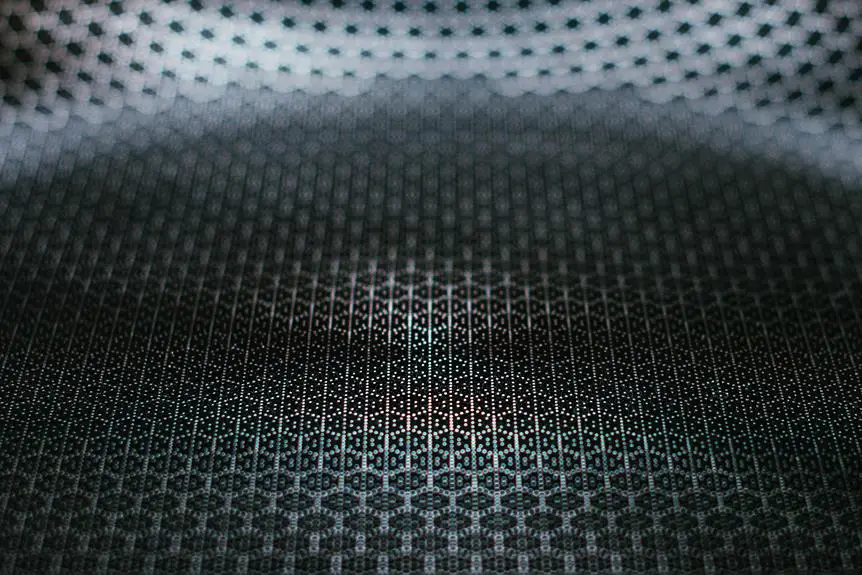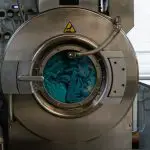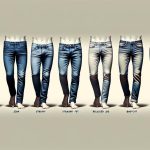You've probably wondered if super glue can successfully bond aluminum fabric. Understanding the properties of both materials is crucial for achieving a strong bond.
Super glue, also known as cyanoacrylate adhesive, can form a durable bond with aluminum fabric if certain steps are followed. By properly preparing the surface and applying the super glue correctly, you can achieve a reliable bond.
Testing the strength of the bond and considering factors that affect bonding will further ensure success. With the right approach, you can master the art of bonding aluminum fabric with super glue, opening up a world of possibilities for your projects.
Key Takeaways
- Aluminum fabric and super glue have compatibility and can form strong and durable bonds.
- Specialized super glue formulas are available for bonding with aluminum fabric.
- Surface preparation, adhesive application, and curing conditions significantly impact the strength of the bond.
- Factors such as molecular bonding, adhesive strength, and chemical compatibility play a crucial role in the effectiveness of super glue on aluminum fabric.
Understanding Aluminum Fabric
You can identify aluminum fabric by its lightweight and durable properties. Aluminum fabric is known for its exceptional strength-to-weight ratio, making it ideal for a wide range of applications. It offers excellent heat resistance, allowing it to maintain its structural integrity in high-temperature environments. Additionally, aluminum fabric possesses remarkable corrosion resistance, making it suitable for outdoor and marine applications where exposure to moisture and other elements is common.
When it comes to fabric flexibility, aluminum fabric can be easily molded and shaped to fit specific design requirements. Its malleability allows for the creation of intricate and complex structures, making it a versatile choice for various projects. Furthermore, aluminum welding is a viable option for joining aluminum fabric pieces together, providing a strong and durable bond.
Properties of Super Glue
Super Glue is known for its exceptional adhesive strength, making it a popular choice for bonding various materials.
When it comes to bonding aluminum fabric, it's important to consider the compatibility of Super Glue with this specific material.
Additionally, factors such as drying time and durability play a crucial role in determining the effectiveness of Super Glue for aluminum fabric applications.
Super Glue's Adhesive Strength
When bonding aluminum fabric, it's essential to understand the adhesive strength of super glue. Super glue, also known as cyanoacrylate adhesive, is renowned for its exceptional adhesive bonding properties.
It forms strong, durable bonds with various materials, including metals, due to its remarkable metal adhesion capabilities. The adhesive strength of super glue is attributed to its ability to create a molecular bond with the surface of the materials it comes into contact with.
This bond results in a reliable and long-lasting adhesion that's crucial when working with aluminum fabric. Understanding the adhesive strength of super glue empowers you to confidently use it for bonding aluminum fabric, ensuring that your projects are held together securely and effectively.
Compatibility With Aluminum
In general, it's important to consider the compatibility of super glue with aluminum fabric due to its unique properties and characteristics.
When bonding aluminum with super glue, it's crucial to understand the bonding process and the chemical reactions involved.
Aluminum is a non-porous metal, which can make it challenging for super glue to create a strong bond.
However, certain super glue formulas are designed to work specifically with metals, including aluminum, by creating a chemical reaction that enhances adhesion.
These specialized super glues are often formulated with additives that promote bonding with aluminum surfaces.
It's important to ensure that the super glue you choose is compatible with aluminum and that the bonding process is carried out in accordance with the manufacturer's instructions to achieve the desired results.
Drying Time and Durability
You can expect it to dry within seconds and provide a strong and durable bond.
Super glue, also known as cyanoacrylate adhesive, is renowned for its rapid drying time, making it an efficient choice for bonding aluminum fabric.
When using super glue, it's crucial to apply it sparingly to avoid excess adhesive squeezing out when pressure is applied. This can be achieved by using a small amount and spreading it thinly across the surface to be bonded.
Once the adhesive is applied, it forms a strong bond in mere seconds, allowing for quick and efficient fabrication.
The durability of the bond is another key advantage of super glue, as it maintains its strength even under demanding conditions.
Surface Preparation for Bonding
Prepare the aluminum fabric surface by thoroughly cleaning it with a solvent to ensure proper bonding with super glue. Surface preparation is crucial for achieving a strong and durable bond between aluminum fabric and super glue. Follow these steps to effectively prepare the aluminum fabric surface:
- Surface Roughness: Use sandpaper or a wire brush to roughen the surface of the aluminum fabric. This will create a texture that allows the super glue to adhere more effectively, enhancing the overall bond strength.
- Chemical Cleaning: After roughening the surface, clean the aluminum fabric with a chemical solvent such as acetone or isopropyl alcohol. This step removes any remaining contaminants, oils, or residues that could interfere with the bonding process.
- Drying: Allow the aluminum fabric to thoroughly dry after cleaning it with the solvent. Any residual moisture can compromise the effectiveness of the super glue bond.
- Avoid Touching: Once the surface is properly cleaned and dried, avoid touching it with bare hands to prevent the transfer of oils and contaminants. This will help maintain the integrity of the prepared surface for bonding.
Following these surface preparation steps will optimize the aluminum fabric for bonding with super glue, ensuring a reliable and long-lasting bond.
Applying Super Glue to Aluminum Fabric
After thoroughly preparing the aluminum fabric surface, proceed by applying super glue to the roughened and cleaned area. When applying super glue to aluminum fabric, it's important to use a minimal amount of the adhesive to avoid excess spillage or uneven distribution. Start by dispensing a small drop of super glue onto the prepared surface, and then use a spreading tool or the nozzle of the glue container to evenly spread the adhesive across the entire bonding area. Ensure that the super glue reaches into any crevices or porous areas of the aluminum fabric for a secure bond.
When applying super glue to aluminum fabric, it's essential to work swiftly and precisely, as super glue sets rapidly upon exposure to air. Once the adhesive is evenly applied, firmly press the bonded surfaces together and hold them in place for the recommended setting time.
It's important to note that while super glue can be an effective bonding method for aluminum fabric applications, there are alternative bonding methods such as epoxy adhesives or specialty aluminum bonding agents that may be better suited for specific project requirements.
Testing Bond Strength
Once super glue has been applied to the aluminum fabric, it's important to test the bond strength to ensure a secure and reliable connection.
To effectively evaluate the bond strength between the super glue and the aluminum fabric, you can consider the following key aspects:
- Testing Methods: Utilize appropriate testing methods such as shear testing or tensile testing to measure the strength of the bond between the super glue and the aluminum fabric. Shear testing involves applying a force parallel to the bond surface, while tensile testing involves pulling the bonded materials apart. These methods can provide valuable insights into the bond strength and help in determining the reliability of the connection.
- Bonding Techniques: Assess the bonding techniques employed during the application of the super glue to the aluminum fabric. Factors such as surface preparation, adhesive application, and curing conditions can significantly impact the bond strength. Proper bonding techniques are essential for achieving a strong and durable bond.
- Material Compatibility: Consider the compatibility of the super glue with aluminum fabric. Ensure that the adhesive is suitable for bonding aluminum and has been specifically designed to adhere to metal surfaces.
- Adhesion Quality: Evaluate the quality of adhesion by examining the bonded area for any signs of delamination or failure. A thorough inspection can help in determining the effectiveness of the bond and identifying any potential issues.
Factors Affecting Bonding
To achieve a strong bond between super glue and aluminum fabric, consider factors such as surface preparation, adhesive application, and curing conditions. Proper surface preparation is crucial for ensuring good adhesion. The aluminum fabric should be clean and free of any oils, dirt, or oxidation that could hinder the bonding process. Additionally, the chemical compatibility between the super glue and the aluminum fabric is essential for a durable bond. When applying the adhesive, ensure an even and sufficient amount is spread across the surface to be bonded. The curing conditions, including temperature and humidity, can also significantly impact the bonding strength.
| Factors Affecting Bonding | Description |
|---|---|
| Surface Preparation | Ensure the aluminum fabric is clean and free of contaminants such as oils and dirt. |
| Chemical Compatibility | Check the compatibility between the super glue and the aluminum fabric to ensure proper adhesion. |
| Adhesive Application | Apply an even and adequate amount of adhesive to the aluminum fabric. |
| Curing Conditions | Consider the impact of temperature and humidity during the curing process on the bonding strength. |
| Bonding Strength | The combined effect of these factors determines the overall bonding strength. |
Tips for Successful Bonding
For successful bonding of super glue with aluminum fabric, follow these three essential tips.
- Surface Preparation: Before applying super glue, ensure that the aluminum surface is clean and free from any oils, dirt, or oxidation. Use a solvent such as isopropyl alcohol to thoroughly clean the surface and then roughen it lightly with fine-grit sandpaper to improve the adhesive bond.
- Appropriate Adhesive Application: Use the super glue sparingly and evenly on the aluminum fabric. Apply a thin layer of adhesive to one surface and press the materials firmly together. Avoid using too much glue as excess adhesive can weaken the bond.
- Clamping and Curing: After bonding the aluminum fabric with super glue, apply pressure using clamps or tape to hold the materials in place while the adhesive sets. Allow sufficient time for the glue to cure completely before subjecting the bond to any stress or load. Follow the manufacturer's instructions for the recommended curing time.
Frequently Asked Questions
Can Super Glue Bond Aluminum Fabric to Other Materials Besides Aluminum?
When bonding aluminum fabric, super glue might not be the best option. Consider using specialized adhesive options like cyanoacrylate or epoxy, and explore bonding techniques such as sanding or priming for a stronger and more durable bond.
What Is the Best Way to Remove Super Glue From Aluminum Fabric if the Bond Is Not Successful?
To remove super glue from aluminum fabric, try acetone or nail polish remover. If the bond isn't successful, consider using alternative adhesives like epoxy or silicone. Different techniques, such as sanding or scraping, may also help with bonding aluminum.
Can Super Glue Be Used to Repair Tears or Holes in Aluminum Fabric?
To repair tears or holes in aluminum fabric, consider alternatives like specialized fabric adhesives or sewing patches for a secure bond. Apply super glue sparingly, using precise application techniques for smaller repairs, ensuring proper adhesion.
Is There a Specific Type or Brand of Super Glue That Works Best for Bonding Aluminum Fabric?
For the best super glue for aluminum fabric, look for cyanoacrylate-based adhesives specifically designed for metal bonding. Alternatively, consider using epoxy or contact cement for a strong and durable bond.
Are There Any Safety Precautions or Tips to Consider When Using Super Glue on Aluminum Fabric?
When bonding aluminum fabric with super glue, ensure proper ventilation to avoid inhaling fumes. Protect your skin with gloves and work in a well-lit area. Avoid contact with eyes, and if the glue gets on skin, wash with soap and water.
- Tetron Fabric for Marine Applications: Durability and Use Cases - June 18, 2025
- Tetron Fabric for Outdoor Furniture: Weather Resistance and Care - June 18, 2025
- Tetron Fabric for Wall Coverings: Style and Application Tips - June 18, 2025







